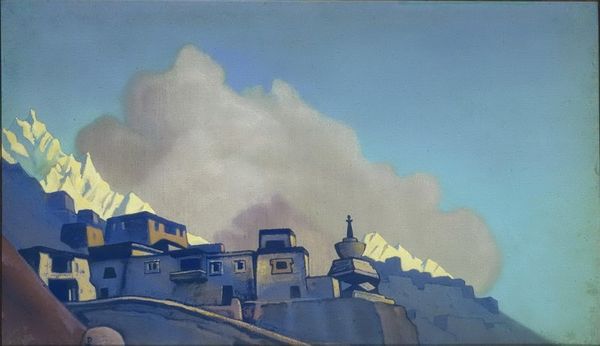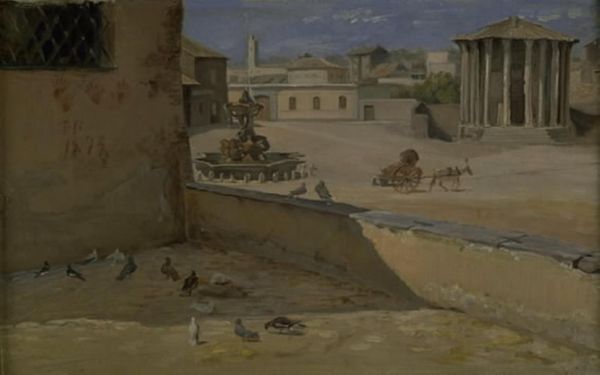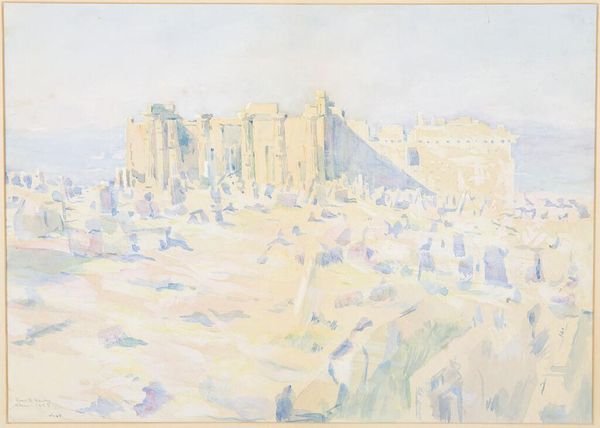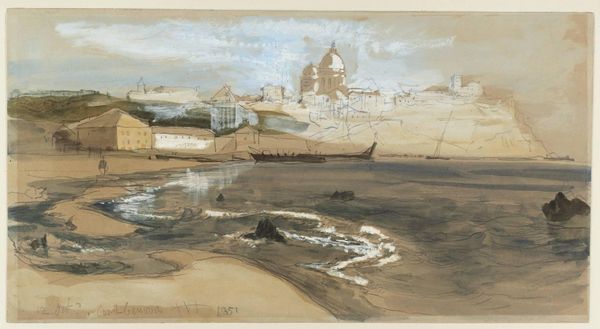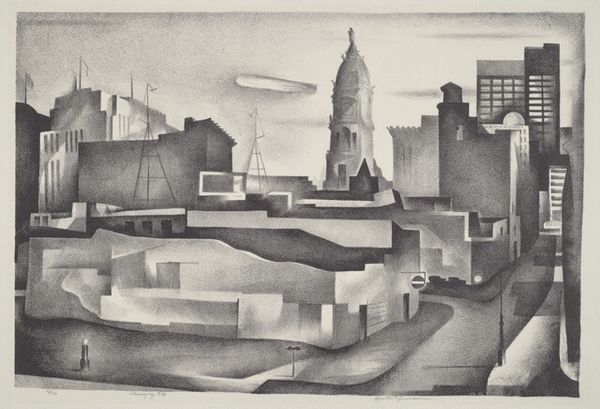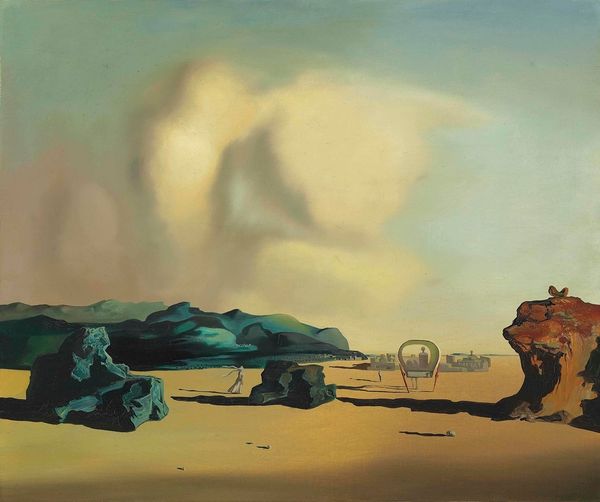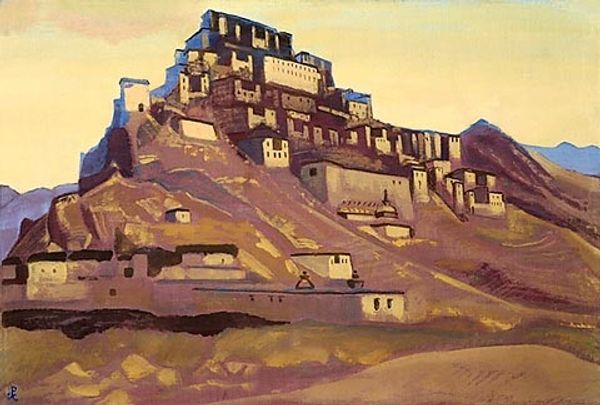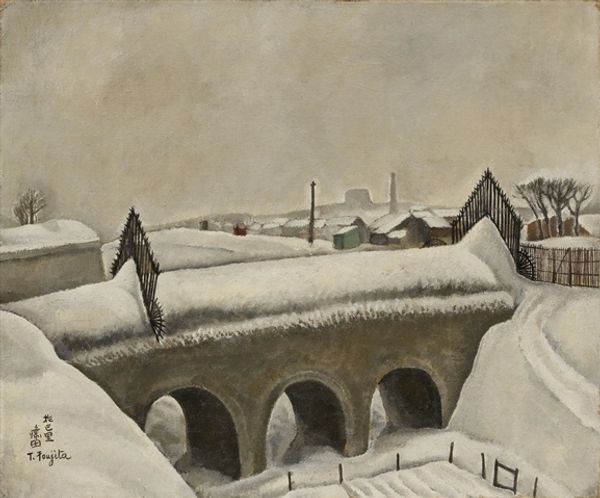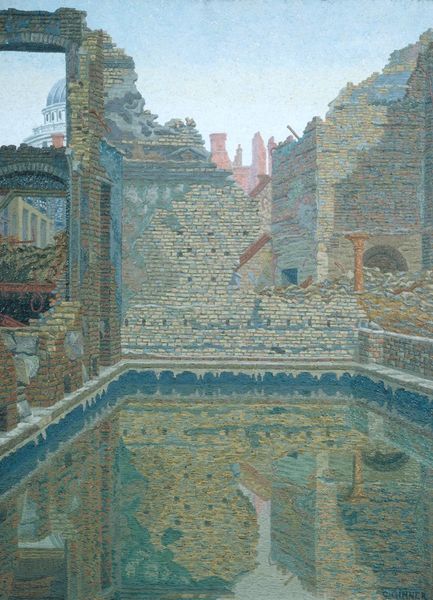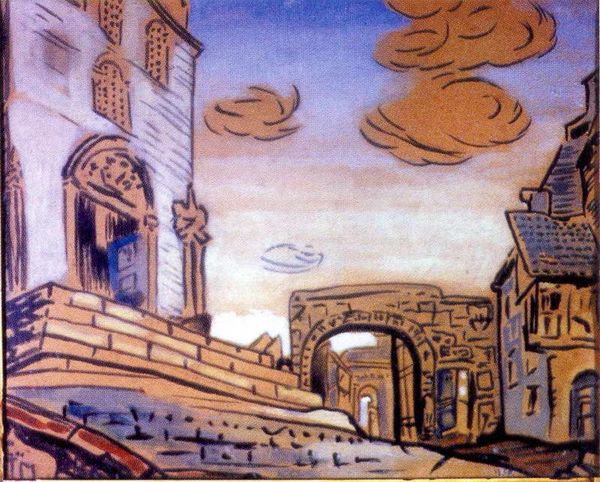
Main Street in Samarkand, from the height of the citadel in the early morning 1870
0:00
0:00
painting, oil-paint
#
public art
#
urban landscape
#
painting
#
street view
#
oil-paint
#
asian-art
#
landscape
#
urban cityscape
#
orientalism
#
cityscape
#
genre-painting
#
academic-art
#
realism
Copyright: Public domain
Curator: What an extraordinary panorama! Before us hangs Vasily Vereshchagin's "Main Street in Samarkand, from the height of the citadel in the early morning," painted in 1870. Editor: My first impression is one of stillness, and also dust. A palpable dryness, as if the air itself is made of sand. The buildings in the distance appear almost as ghosts. Curator: That feeling of stillness is quite intentional. Vereshchagin positioned himself high above the city, providing us with an almost detached perspective on the bustling life below. He gives us a military assessment point and perhaps speaks of imperial ambitions. Editor: The weaponry reinforces that idea. Cannons arranged rather formally in the foreground feel less like defense and more like a display of power. Blue ornamentation also stands out. Curator: You're right to point that out. That shade of blue has historical and symbolic resonance in Islamic art and architecture; frequently associated with divinity, paradise, and protection. It's a common, and comforting, colour. Editor: Comforting, yes, and what better way to promote authority than through recognizable and enduring visual motifs? This layering of the local culture for an outside purpose. Are we sure this is a moment of peace being depicted here? It looks eerily staged for the benefit of an unseen observer. Curator: It is difficult to say. We should not ignore how Russia, during this period, actively incorporated orientalist tropes into its visual propaganda to support its colonial policies. Editor: The architecture, that almost grid-like layout in the middle ground…It projects such a sense of order and control. Almost like a theatre stage. Curator: Precisely, one meant to impress upon the viewer the strength and organization of Russian influence in Central Asia. His role in creating this artwork speaks volumes of how statecraft intertwines with artistic practice, using symbols that have resonance even today. Editor: Yes. It’s disquieting how such symbols endure, charged with sometimes contradictory meanings. Gives you something to think about. Curator: Indeed, this piece is not merely a depiction of Samarkand; it's a statement about power, perception, and the enduring language of symbols within an imperial context.
Comments
No comments
Be the first to comment and join the conversation on the ultimate creative platform.

